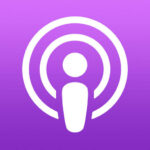
Down syndrome (DS) is one of the main causes of intellectual disability, the incidence being influenced by maternal age and distributed in a ratio of 1:319 to 1:1000 live births.
DS has high genetic complexity and phenotypic variability, the most common cause being the presence of an extra copy of chromosome 21 (karyotype: 47, XX or XY, + 21). Other causes include Robertsonian translocation (2-4% of cases, karyotype: 46, XX or XY, -14, +t(14,21)) and mosaicism (1-2% of cases).
Trisomic fetuses have a high risk of miscarriage and people with DS have a higher incidence of developing a myriad of medical disorders. Recent advances in medicine and social support have increased the life expectancy of this population, with an average age of 55 years in a developed country. The clinical aspects of the disease will be discussed below.
1. Dysmorphic characteristics
1.1. Head and neck
Oblique palpebral fissure, epicanthic fold and brachycephaly are almost universal features in DS (figure 1). Other aspects are present in 47 to 82% of patients, such as flattened facial profile and bridge of the nose, dysplastic ears, folded and with low implantation, Brushfield spots, open mouth, protruding and fissured tongue, short neck, excess skin in the nape, narrow palate and abnormal teeth. An important aspect due to joint hyperflexibility is atlantoaxial instability with possible subluxation of the cervical spine.
1.2. extremities
Small and broad hands, fifth toe slightly curved with hypoplasia of the middle phalanx, single transverse palmar crease (figure 2), increased space between the first and second toes (called the sandal difference) and joint hyperflexibility.
1.3. neonatal characteristics
Below is a list of the 10 most common features of DS diagnosed in the neonate, of which at least 4 are certainly found:
- flat face profile
- Oblique palpebral fissure
- anomalous ears
- Hypotonia (figure 3)
- Moro’s reflection compromised
- Dysplasia of the middle phalanx of the fifth finger
- Single transverse palm crease
- Excess skin on the back of the neck
- joint hyperflexibility
- Pelvic dysplasia
1.4. Growth
Weight, height and head circumference are measured to a lesser extent in children with DS. Short stature is explained by the lower growth rate in childhood and adolescence, especially in cases of congenital heart disease. The cause of growth retardation is still unknown.
2. Intellectual disability
Almost all individuals with DS have cognitive impairment, but to varying degrees. Developmental problems are apparent in the first year of life due to delay in performing actions such as sitting, crawling, and walking. There is a cognitive decline until the age of approximately 10, reaching a plateau in adolescence and adulthood.
2.1. Psychiatric and behavioral disorders
Approximately 20% of individuals with DS have major depressive disorder or aggressive behavior. Autism is a common comorbidity in DS, affecting around 7% of diagnosed children. The etiology of autism is unknown but it is suspected to be autoimmune.
2.2. Dementia and Alzheimer’s Disease
Adults with DS commonly develop functional and neuropathological changes typical of Alzheimer’s disease around the sixth decade of life.
3. Cardiovascular disease
Approximately half of individuals with DS have congenital heart disease. More common secondary lesions include atrial septal defect and persistent ductus arteriosus. The prevalent primary lesions are:
- Complete atrioventricular septal defect (37%)
- Ventricular (31%) and atrial (15%) septal defect
- Partial atrioventricular septal defect (6%)
- Fallot tetralogy (5%)
- Persistence of the ductus arteriosus (4%)
- Miscellaneous (2%)
Pulmonary hypertension affects 28% of DS patients and may be associated with congenital heart disease, obstructive sleep apnea, recurrent pneumonia and intermittent hypoxia.
4. Lung diseases
Common pulmonary complications in children with DS include sleep apnea, asthma, disorders of the pulmonary vasculature, interstitial lung disease, upper and lower airway abnormalities, and chronic aspiration. Respiratory tract infections are more frequent and severe in patients with DS.
4.1. obstructive sleep apnea
It represents 30-75% of patients with DS. In children, the disease is associated with dysphagia, gastrointestinal conditions such as gastroesophageal reflux disease and congenital heart disease. Intermittent hypoxemia can cause pulmonary hypertension and contribute to mental impairment.
5. Gastrointestinal abnormalities
These anomalies occur in approximately 5% of children with DS, highlighting duodenal atresia or stenosis, associated or not with annular pancreas, in half of the cases. Less frequently, cases of imperforate anus and esophageal atresia with tracheoesophageal fistula are observed. From another perspective, it is noteworthy that 28% of cases of atresia or duodenal stenosis and 20% of cases of annular pancreas are due to DS. Hirschsprung’s disease is also more common in patients with DS than in the general population, even though the risk is less than 1%. There is also a strong association between DS and celiac disease, with a prevalence of 5 to 16% of cases.
6. Visual and auditory disorders
6.1. Ophthalmological impairment
The most common problems are myopia, hyperopia and astigmatism (35-76%), strabismus (25-57%) and nystagmus (18-22%). Cataracts can affect 5% of newborns, and the frequency of eye problems increases with age. Some children develop glaucoma, and in the second decade of life, many patients have corneal opacity.
6. Visual and auditory disorders
6.1. Ophthalmological impairment
The most common problems are myopia, hyperopia and astigmatism (35-76%), strabismus (25-57%) and nystagmus (18-22%). Cataracts can affect 5% of newborns, and the frequency of eye problems increases with age. Some children develop glaucoma, and in the second decade of life, many patients have corneal opacity.
6.2. auditory impairment
As for hearing disorders, 38-78% of DS patients develop problems of this nature. Otitis media is a frequent problem (50-70% of children with DS) and is commonly associated with hearing loss in this population. Congenital deafness is also more common in DS, affecting 15% of newborns.
7. Endocrine Disorders
Common endocrine dysfunctions include thyroid dysfunction, diabetes and obesity:
- Hypothyroidism (3-54%)
- Hyperthyroidism (2.5%)
- Type I diabetes (3-8x higher prevalence than in the general population)
- Obesity, attributed to reduced resting metabolic rate related to DS. In general, the weight is less than expected for most children with DS and then disproportionately increases so that most of them are obese by 3-4 years of age.
8. Hematological disorders
Hematological problems are common in DS, especially in children, where the risk of leukemia is 1-1.5% and that of polycythemia is 65%. There are also cases of macrocytosis and leukopenia, both not justified by folate deficiency. Thrombocytosis is common while thrombocytopenia is rare.
8.1. Transient myeloproliferative syndrome
Also known as transient leukemia, transient abnormal myelopoiesis, or transient leukemoid reaction, it is a form of asymptomatic leukemia in most neonates that resolves spontaneously within 2-3 months. Severe cases of the disease are represented by fetal hydrops, hyperleukocytosis, liver failure and cardiopulmonary failure.
8.2. Acute megakaryoblastic leukemia (AML-M7)
Approximately 26% of children with DS who have transient leukemia develop acute megakaryoblastic leukemia. The incidence is up to 500 times higher in DS patients than in the general population.
8.3. Acute lymphoblastic leukemia
The risk of developing this type of leukemia is approximately 10 – 20% higher in children with DS, representing 1-3% of patients with acute lymphoblastic leukemia. Patients often respond to chemotherapy.
9. Genitourinary Disorders
9.1 Reproduction
Women with DS are fertile and can become pregnant. Counseling should be given for menstruation management and contraception. Almost all men with DS are infertile, the mechanism being impaired spermatogenesis.
9.2 Urological abnormalities
Disorders include hypospadias (1:250), cryptorchidism (14-27% of men), testicular cancer, and renal malformation.
10. Immunodeficiency
Immunological impairment may be associated with greater susceptibility to infection, autoimmune diseases and neoplasms. It is not known whether the immunodeficiency is primary or an early senescence of the immune system. Studies have suggested a smaller expansion of T and B lymphocytes in the first years of life, in addition to chemotactic defects and a decrease in immunoglobulin G4.

